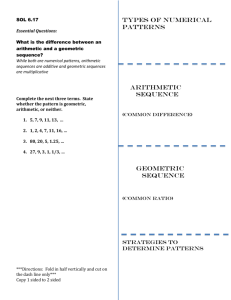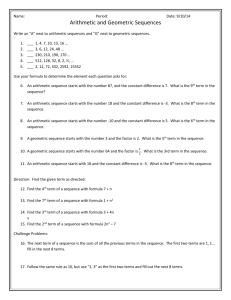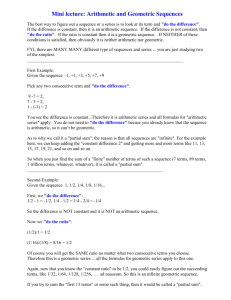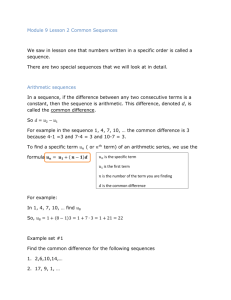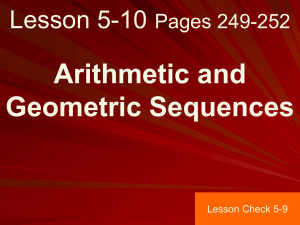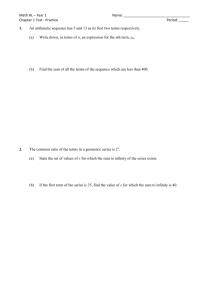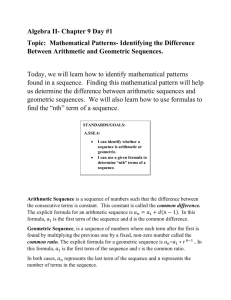Sequences
advertisement
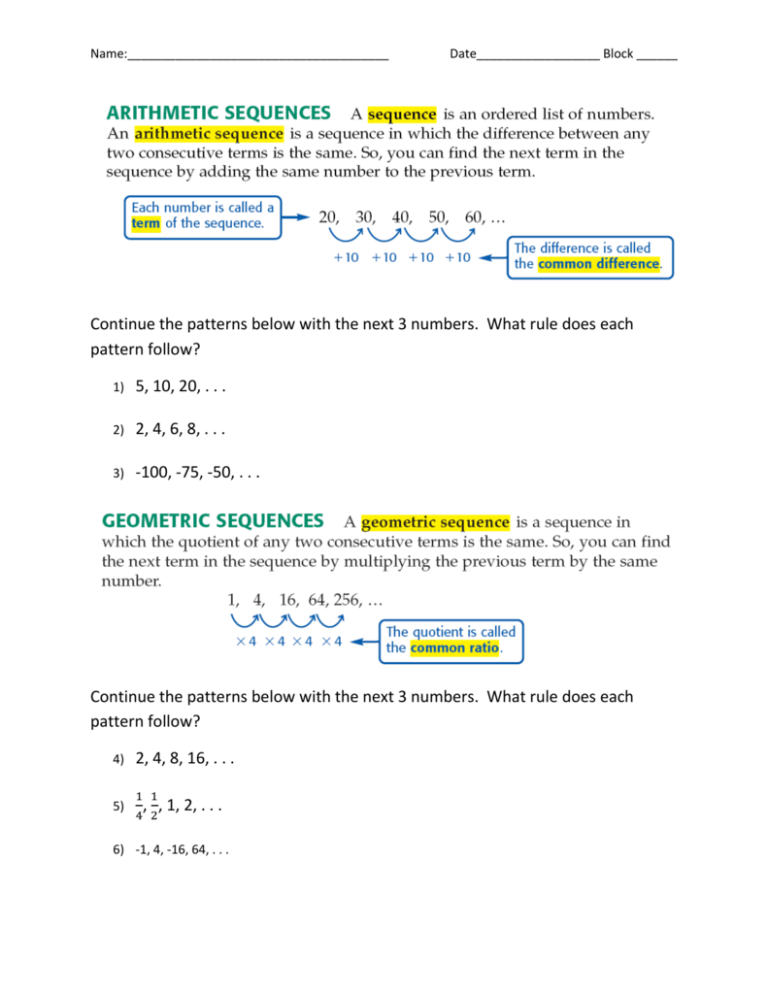
Name:______________________________________ Date__________________ Block ______ Continue the patterns below with the next 3 numbers. What rule does each pattern follow? 1) 5, 10, 20, . . . 2) 2, 4, 6, 8, . . . 3) -100, -75, -50, . . . Continue the patterns below with the next 3 numbers. What rule does each pattern follow? 4) 5) 2, 4, 8, 16, . . . 1 1 , , 1, 2, . . . 4 2 6) -1, 4, -16, 64, . . . Sequences A sequence is an ordered list of numbers. Each number is called a ___________ of the sequence. ___________ sequence _____________ sequence each term is found by adding the same number to the previous term each term is found by multiplying the previous term by the same number 8, 11, 14, 17, ... "n + 3" +3 +3 +3 3, 6, 12, 24, ... x2 x2 x2 The difference between any two consecutive terms in an arithmetic sequence is called the ______________ ______________________. The factor between any two consecutive terms in a geometric sequence is called the ______________ ______________. Sometimes the arithmetic sequence looks like the term is subtracted, but it’s really adding a negative. Sometimes the geometric sequence looks like the term is divided, but it’s really multiplying a fraction. Examples: State if each sequence is arithmetic, geometric, or neither. If the sequence is arithmetic or geometric describe the relationship between two consecutive terms in the sequence. 1) 35, 28, 21, 14… ________________ ______________ 2) 1, 3, 9, 27….. ________________ ______________ 3) 2, -4, 8, -16…. ________________ ______________ 4) 121, 1221, 12221 … ________________ ______________ "2n" 5) -8, -6, -4, -2… ________________ ______________ 6) 2, 6, 24, 120…. ________________ ______________ 7) What is the common ratio of the geometric sequence shown: 8) What is the 7th term of the arithmetic sequence: 8, 32, 128, 29 , 21 , 13 , 5 , 9) Find the missing terms in the sequence 26, 33, 40, ___, 54, 61, ___, … Write out the next three terms of the following sequences. 10) 0, 13, 26, 39 … 11) 8, 5, 2, – 1, –4 … 12) –2, –6, –18, –54 … 13) Create three sequences. One sequence must be arithmetic, one sequence must be geometric, and one sequence must be neither. Then describe the relationship between two consecutive terms in each of your arithmetic and geometric sequences. Arithmetic: ________________________________________ ______________ Geometric: ________________________________________ ______________ Neither: ________________________________________

